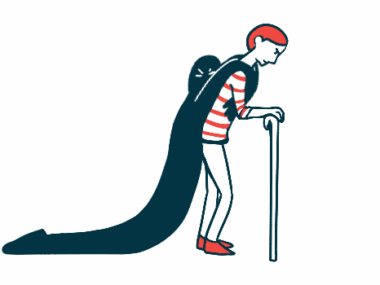EDS Patients More Likely to Have Postural Tachycardia Syndrome, Study Finds
Written by |

Ehlers-Danlos syndrome is strongly associated with orthostatic intolerance syndromes, particularly postural tachycardia syndrome, researchers found in a recent analysis.
The study, “Postural tachycardia syndrome and other forms of orthostatic intolerance in Ehlers-Danlos syndrome,” was published in the journal Autonomic Neuroscience: Basic and Clinical.
EDS is a group of rare inherited conditions that affect the connective tissue, referring to tissue that connects, binds, or separates other tissues or organs. One of the EDS types is EDS hypermobility — also known as joint hypermobility — which is characterized by joints that easily move beyond the normal range.
Postural tachycardia syndrome (POTS) is characterized by an abnormal increase in heart rate that occurs right after either sitting up or standing, leading to dizziness, fainting, and other symptoms.
Over the past two decades, POTS, along with other forms of orthostatic intolerance, which refers to conditions related to or caused by standing upright, have been increasingly recognized in patients with EDS and joint hypermobility. EDS patients are also known to have chronic fatigue, which is a key feature of orthostatic intolerance as well.
Researchers in this study set out to review the association, as described in previous studies, between orthostatic intolerance syndromes and both joint hypermobility and EDS. After conducting an extensive literature search, they identified 10 relevant research studies that reported an association between joint hypermobility/EDS and orthostatic intolerance.
As hypothesized, these studies pointed to a significantly higher prevalence of orthostatic intolerance symptoms among patients with joint hypermobility or EDS, compared with healthy controls. In fact, according to studies that enrolled more than 10 participants, between 41% and 100% of patients with joint hypermobility/EDS reported orthostatic symptoms on a regular basis.
Furthermore, the studies revealed a significantly higher prevalence of cardiovascular and autonomic abnormalities in these patients both at rest and during orthostatic challenge tests. Autonomic functions include heart rate, digestion, respiratory rate, pupillary response, urination, and sexual arousal.
POTS was the most commonly recognized circulatory disorder, identified in 41% of patients with EDS, compared with only 11% of healthy controls.
Finally, researchers also discovered that the severity of orthostatic symptoms in EDS patients tended to correlate with a worse quality of life.
“There is a strong association between several forms of cardiovascular dysfunction, most notably postural tachycardia syndrome, and joint hypermobility or Ehlers-Danlos syndrome,” the researchers concluded. “We propose that recognition of joint hypermobility and Ehlers-Danlos syndrome among those with orthostatic intolerance syndromes has the potential to improve clinical care and the validity of research findings.”





